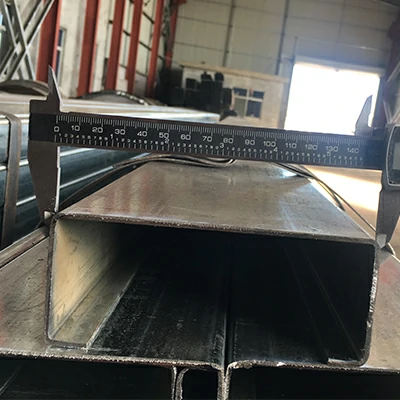C channels (also known as C-sections or U-channels) contribute to the transportation industry in various ways, playing a role in the construction and manufacturing of vehicles, infrastructure, and transportation-related components.
Here are several ways in which C channels contribute to the transportation sector:
- Vehicle Frame Construction:
- C channels are commonly used in the construction of vehicle frames. They provide structural support and rigidity, contributing to the overall strength and stability of automobiles, trucks, buses, and other transportation vehicles.
- Trailer and Chassis Construction:
- In the manufacturing of trailers, chassis, and other towable transportation equipment, C channels are often utilized to create the framework. These channels offer a lightweight yet strong solution for supporting and distributing loads.
- Cargo Container Framework:
- Cargo containers used in transportation, whether for shipping goods by sea, land, or rail, often incorporate C channels as part of their framework. The channels contribute to the structural integrity of the container, ensuring it can withstand stacking, handling, and transportation stresses.
- Railcar Construction:
- In the railway industry, C channels are employed in the construction of railcars and rolling stock. They serve as structural components that contribute to the strength and stability of the railcar frame.
- Infrastructure Support:
- C channels are used in the construction of transportation infrastructure, such as bridges, overpasses, and support structures. They provide the necessary structural support for various components, including guardrails, signposts, and lighting fixtures.
- Electrical and Cable Management:
- C channels are often used to manage and secure electrical wiring and cables in transportation vehicles. They offer a convenient and organized way to route and protect wiring systems, contributing to the safety and reliability of electrical components in vehicles.
- Trolley and Overhead Line Construction:
- In the construction of trolleybus and tramway systems, C channels may be used to support overhead lines. These channels help create a stable and elevated structure for the electrical lines that power electric transportation vehicles.
- Aircraft Manufacturing:
- In the aerospace sector, C channels are utilized in the construction of aircraft components. They contribute to the framework of wings, China C channel suppliers fuselages, and other structural elements, providing strength and support while maintaining a lightweight design.
- Modular and Prefabricated Transport Structures:
- C channels are suitable for modular and prefabricated construction methods. Prefabricated transportation structures, such as bus shelters, pedestrian bridges, or modular transport terminals, may incorporate C channels for ease of assembly and installation.
- Vehicle Modifications and Accessories:
- C channels can be used in the customization and modification of transportation vehicles. They serve as a versatile structural element for attaching accessories, racks, or additional components to enhance functionality.
- Marine Industry:
- In the marine sector, C channels find application in the construction of boat frames, ship structures, and other marine transportation components. They contribute to the overall strength and integrity of vessels.
In summary, C channels are versatile structural components that contribute significantly to the transportation industry. Their use spans a wide range of applications, including vehicle construction, infrastructure support, cargo handling, and the manufacturing of transportation-related equipment. The flexibility, strength, and ease of fabrication make C channels valuable elements in the design and construction of transportation systems and vehicles.
